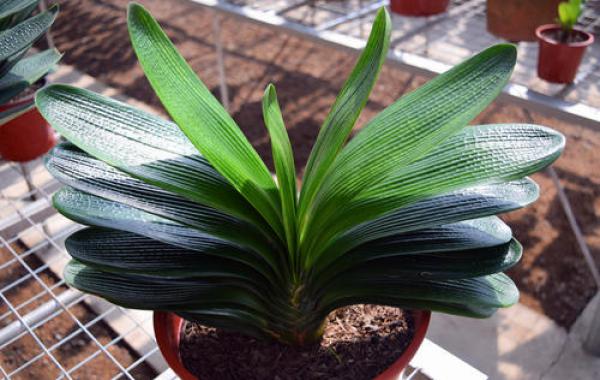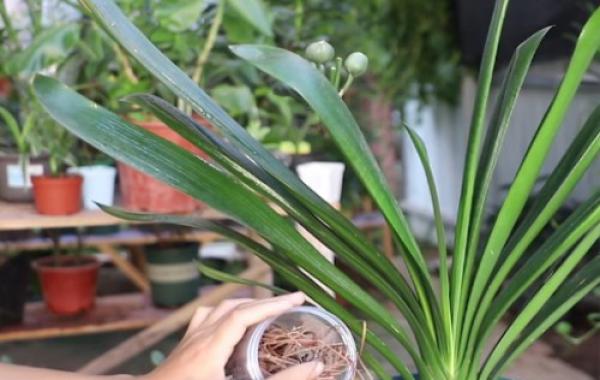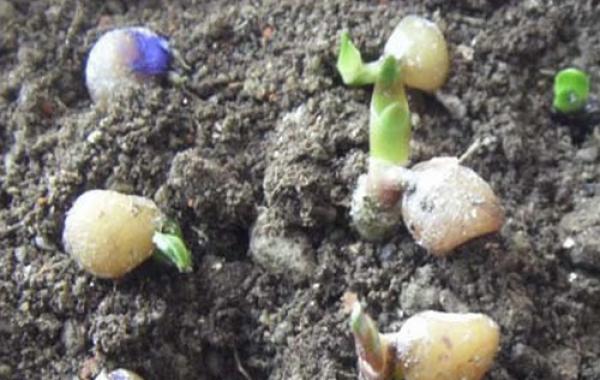How many common viruses are there in Cymbidium? How to prevent and cure it?

How many common viruses are there in clivia? Specifically how to prevent it.
Clivia has now become the first choice for natural home improvement, but due to poor management, Clivia will be affected by viruses, there are several common diseases, specifically white silk disease, soft rot, anthracnose, etc., the following small series of these virus prevention and control methods introduced to you.
A Common Virus in Clivia--Anthrax
The disease occurs mostly in rainy, humid and sultry seasons, and the disease occurs mostly at the tip and edge of leaves. Early leaves appear wet brown spots, then expand into oval and with the wave head of the main disease spots, the surrounding yellow, late gradually withered. The pot soil is too wet and excessive nitrogen fertilizer is easy to cause this disease.
Control methods:
① Give the flowerpot a ventilated and well-lit environment. The pot soil should only be moist and should not be watered too much and too densely. Increase phosphorus and potassium fertilizer and control nitrogen fertilizer.
② When signs of disease are found, 50% wettable carbendazim powder and 800 times water should be immediately used to make a solution, or 60% anthrax and 1000 times water solution should be sprayed, about 6 days spray 1 time, spray 3-5 times can be effective.
Common virus of Clivia--soft rot
Germs often invade through wounds. When the disease occurs, pale yellow water-stained spots appear on the leaves, which expand into regular spots, making the leaves become brown soft rot compounds, and bacterial fluid flows out of the wounds.
Control methods:
① Once the disease is found, the diseased plants should be separated immediately, the culture soil around the plants should be peeled open, the diseased parts should be exposed, the rotten leaves should be opened, the rotten parts should be scraped off with a disinfectant knife, the sunlight should be properly irradiated, and the ventilation should be kept dry;
(2) If there are many rotten plants, all infected tissues shall be removed, soaked in 5% potassium permanganate aqueous solution for 1 hour, washed and dried with clean water, smeared plant ash on the incision, planted in a new pot, and placed in a ventilated place with low temperature;
③ Drug treatment can be penicillin or streptomycin or oxytetracycline plus 4000-5000 times aqueous solution spray or smear spots, there is a certain effect.
Common Virus of Clivia--White Silk Disease
When this disease occurs, the stem near the root appears water-stained brown irregular spots, soft rot of cortex, then white silk mycelium spreads on the rhizosphere soil surface, later into small sclerotia, finally color rapeseed, expanding to the whole base rot necrosis.
Control methods:
① Before putting on the basin, the culture soil should be disinfected. A simpler method is to place the culture soil at 60℃ for 24 hours;
② Pay attention to the soil surface frequently, pick out and burn the white bacteria line when it is found, and sprinkle some lime powder around the diseased point for disinfection;
(3) At the early stage of disease, 50% carbendazim WP 500 times solution was irrigated on the base of plant stem and soil around the base, once a week, 2-3 times.
The above are the specific prevention and control methods of common Clivia viruses, hoping to bring help to everyone.
Clivia several common diseases, white silk disease, soft rot, anthracnose and so on.
(1) White silk disease. When this disease occurs, the stem near the root appears water-stained brown irregular spots, soft rot of cortex, then white silk mycelium spreads on the rhizosphere soil surface, later into small sclerotia, finally color rapeseed, expanding to the whole base rot necrosis.
Prevention and control methods: ① Before the basin, the culture soil should be disinfected. The simpler method is to place the culture soil at 60℃ for 24 hours;② Pay attention to the soil surface frequently, pick out and burn the white bacteria line when it is found, and sprinkle some lime powder around the diseased point for disinfection;③ In the early stage of disease, irrigate 50% carbendazim wettable powder 500 times solution on the base of the plant stem and the soil around the base, once a week, 2-3 times.
(2) Soft rot. Germs often invade through wounds. When the disease occurs, pale yellow water-stained spots appear on the leaves, which expand into regular spots, making the leaves become brown soft rot compounds, and bacterial fluid flows out of the wounds.
Control methods: ① Once the disease is found, immediately separate the diseased plants, peel off the culture soil around the plants, expose the diseased parts, break apart the rotten leaves, scrape off the rotten parts with a disinfectant knife, properly irradiate with sunlight, and keep ventilated and dry;② If there are many rotten plants, all the diseased tissues shall be removed, soaked in 5% potassium permanganate aqueous solution for 1 hour, washed and dried with clean water, smeared plant ash on the incision, planted in a new pot, and placed in a ventilated place with low temperature; ③ Drug treatment can be penicillin or streptomycin or oxytetracycline plus 4000-5000 times aqueous solution spray or smear spots, there is a certain effect.
(3) Anthrax. The disease occurs mostly in rainy, humid and sultry seasons, and the disease occurs mostly at the tip and edge of leaves. Early leaves appear wet brown spots, then expand into oval and with the wave head of the main disease spots, the surrounding yellow, late gradually withered. The pot soil is too wet and excessive nitrogen fertilizer is easy to cause this disease.
Prevention and control methods: ① Give the flowerpot a ventilated and well-lit environment. The pot soil should only be moist and should not be watered too much and too dense. Increase phosphorus and potassium fertilizer and control nitrogen fertilizer. 2. When signs of disease are found, 50% wettable carbendazim powder and 800 times water should be used immediately to make a solution, or 60% anthrax and 1000 times water solution should be sprayed, about 6 days spray 1 time, spray 3-5 times can be effective.
Related
- Is the orchid suitable for indoor use? Is it good for the body?
- How to prevent the empty root of orchids?
- What to do after the crab claw orchid is withered?
- Why are the leaves of orchids always yellow? Fertilizing and watering.
- Can the root of the gentleman orchid be saved if it is rotten?
- Diagnosis and treatment of cotton-blowing beetle insects in Cymbidium
- There is a way for a gentleman's orchid to rot.
- What is the most suitable temperature and humidity for the orchid?
- How to raise a gentleman's orchid? Cultivation techniques of Cymbidium
- How to prepare the nutritive soil for the cultivation of Cymbidium



